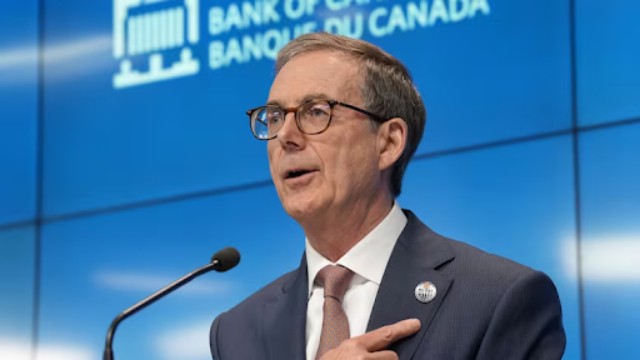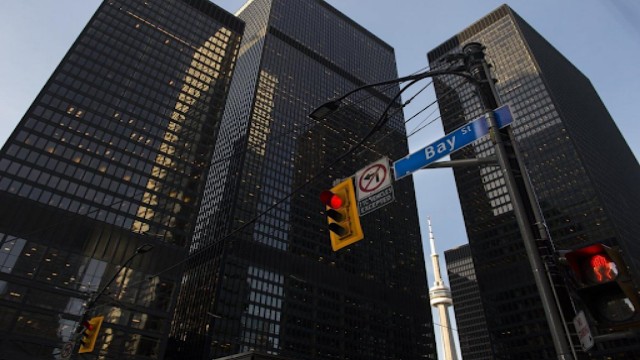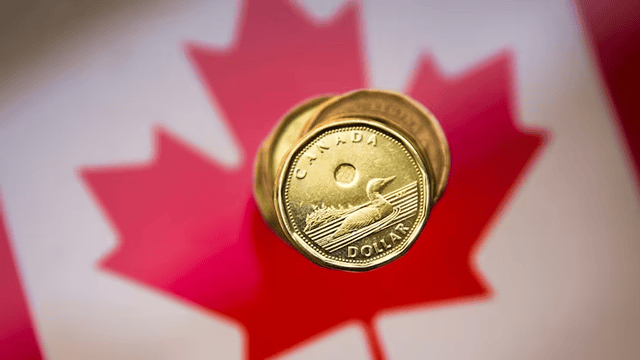
Bank of Canada Governor Tiff Macklem showed off his Edmonton Oilers pin while sharing his support for the team during a news conference in Ottawa. At the same event on Wednesday, he announced that interest rates would remain unchanged. (Adrian Wyld/The Canadian Press)
The Bank of Canada has decided to keep its key interest rate unchanged at 2.75%, choosing caution over action amid mixed economic signals. While the decision reflects slight economic strength in early 2024, experts argue that slashing rates alone won’t shield Canada from a looming slowdown.
Bank of Canada Governor Tiff Macklem described the current economy as "softer but not sharply weaker" during a news conference. Despite early signs of economic activity — such as a 2.2% growth in GDP during the first quarter — the central bank’s tone remains cautious. Macklem emphasized that the early-year momentum, largely driven by a spike in exports, is unlikely to last. Much of that growth came as businesses rushed to ship goods before new U.S. tariffs kicked in.
However, Macklem warned that the second quarter could feel the drag of that front-loaded activity. He also noted that inflation, though showing signs of easing, still has areas of concern. While overall inflation dropped to 1.7% in April — partly due to the end of the consumer carbon tax — the Bank's preferred inflation measure, which excludes volatile elements, rose past 3%. This jump, Macklem admitted, “has our attention,” indicating underlying price pressure may be firmer than they had anticipated.
Housing Market Not Easily Persuaded by Lower Rates
Toronto real estate expert John Pasalis noted that even a rate cut wouldn’t have stirred much activity in Canada’s housing market. “Lower rates won’t convince someone to buy a house if they’re scared of losing their job,” he told CBC News. With resale numbers down and national prices slipping year-over-year, confidence, not cost, seems to be the bigger issue.
Pasalis believes the summer might still feel slow, though the market could improve by fall if the Bank cuts the rate to 2% in the coming months. However, even then, recovery would also depend on clarity regarding trade tensions and the broader economic outlook.
Small Businesses Need More Than Monetary Moves
Small business owners appear to welcome the rate hold but say they need more than that to stay afloat. Andreea Bourgeois from the Canadian Federation of Independent Business explained that while lower rates do help, what businesses truly need is optimism — a signal that the economy is stable and growth is possible.
Right now, she says, many businesses are not hiring or investing because they’re unsure about future demand, especially with the U.S.-Canada trade situation still unsettled. They’re holding off on expansion — not shrinking yet, but also not moving forward.
Industry Leaders Call for Certainty, Not Just Cuts
Manufacturing leaders echoed the same sentiment. Flavio Volpe, president of the Automotive Parts Manufacturers’ Association, and Dennis Darby, who heads Canadian Manufacturers and Exporters, both agreed that a simple rate change won’t resolve the core issue — economic uncertainty, particularly in Canada’s relationship with the U.S. That, they say, falls under the government’s domain, not the Bank of Canada.
A Risky Move, Say Economists
Economists like Royce Mendes from Desjardins believe the central bank’s cautious stance might actually hurt more than help. By not lowering rates now, the Bank may appear hesitant to support the economy — a signal that could discourage businesses and consumers alike from spending or investing.
Tiff Macklem hasn’t ruled out a rate cut at the next meeting in July, but acknowledged that the path forward is unclear. The Bank’s leadership holds “diverse views” and is taking extra care due to “unusual uncertainty.”
TD economist Leslie Preston summed it up sharply — with core inflation rising and confidence dipping, Canada may head into recession unless trade relations improve fast. In her words, more rate cuts are likely on the horizon.















